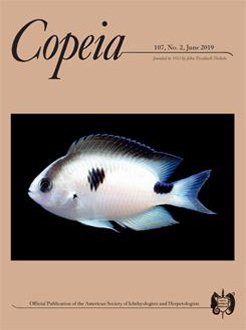The dynamic, multiscale nature of stream systems makes it challenging to establish basic ecological principles to guide stream fish conservation and management. For example, finer-scale instream habitat is often constrained by coarser-scale characteristics driving observed species distributions. Additionally, instream environmental variability can result in patchy species distributions within general upstream–downstream occurrence patterns (i.e., variation around a common theme). Groundwater contribution, an often-overlooked habitat characteristic in warmwater systems, has numerous influences on the instream environment and can play a role in fish habitat-use patterns and assemblage structure. We identified multiscale instream habitat characteristics associated with the occurrence probability of 20 Ozark Highland stream fishes. Fishes were surveyed using tow-barge electrofishing in 76 channel unit complexes (i.e., riffle-to-riffle habitat sequences) nested in 20 reaches of northwest Oklahoma and southwest Missouri. We used a multiscale, multispecies generalized linear mixed model to identify relationships between fish occurrence and both channel unit complex- and reach-scale variables. Stream fishes were more likely to occur in larger or deeper channel unit complexes. Fish occurrence was also associated with different levels of reach-scale groundwater contribution, bankfull width-to-depth ratio, and percent instream cover. Ten fishes, typically associated with warmer water temperatures, had lower occurrence probabilities in reaches with higher groundwater contribution, whereas Banded Sculpin Cottus carolinae and Creek Chub Semotilus atromaculatus occurrence probabilities were higher. There was no relationship between occurrence probabilities and instream cover for 11 fishes. The occurrence probabilities in relation to varying amounts of instream cover for the other nine stream fishes was dependent on bankfull width-to-depth ratio, where the direction and magnitude of the relationships varied among stream fishes. The variation in occurrence relationships can be attributed to thermal preferences, environmental interactions, and the use of multiple habitat types. Our findings demonstrate the multiscale nature of fish occurrence relationships and how conservation and management may benefit from considering this complexity when developing holistic instream habitat enhancement strategies.
How to translate text using browser tools
22 April 2019
Multiscale Habitat Factors Explain Variability in Stream Fish Occurrence in the Ozark Highlands Ecoregion, USA
Robert Mollenhauer,
Yan Zhou,
Shannon K. Brewer
ACCESS THE FULL ARTICLE





